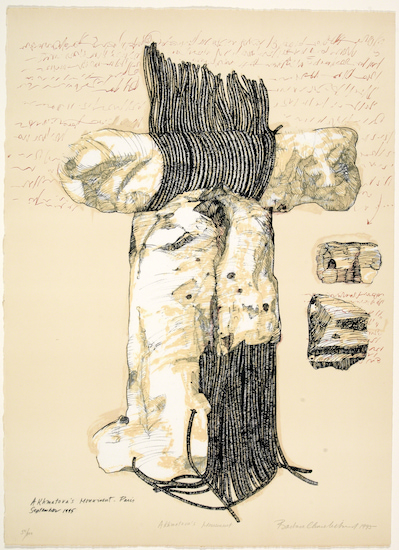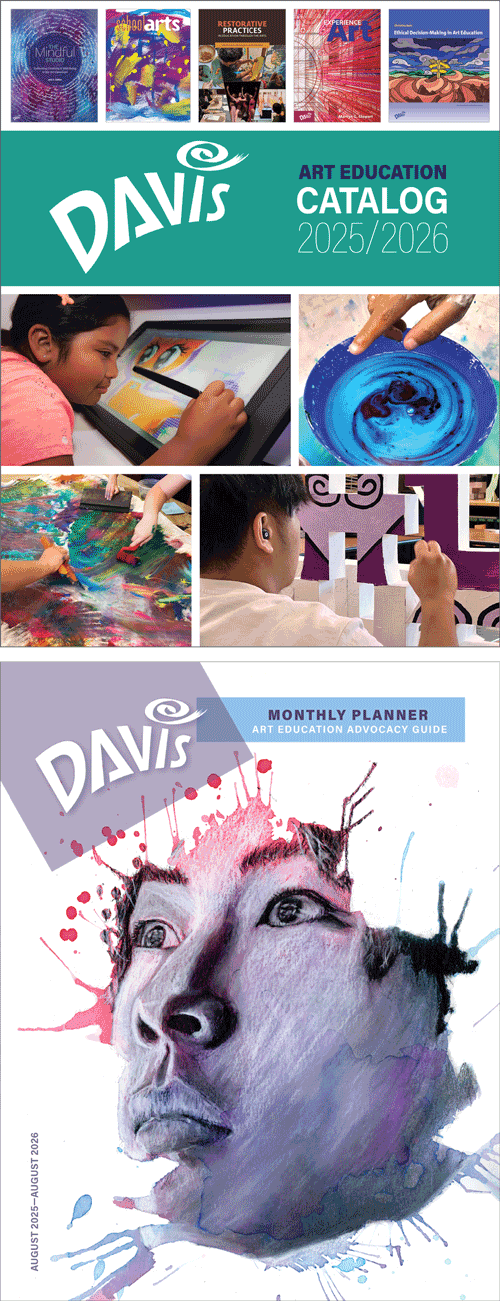Artist Birthday: Barbara Chase-Riboud
The tradition of African American women sculptors goes all the way back to the 1800s with Edmonia Lewis (1844–1907), continues through the Harlem Renaissance in the person of Augusta Savage (1892–1962) and brings us to the present day in the spectacular abstractions of Barbara Chase-Riboud.
Artist Birthday for 26 June: Barbara Chase-Riboud (born 1939, United States)
Barbara Chase-Riboud is a contemporary African American abstract sculptor who lives and works in Paris.
 |
| Barbara Chase-Riboud, Study for Akhmatova’s Monument, 1995. Color offset lithograph on paper, 75.9 x 54.9 cm. Philadelphia Museum of Art. © 2025 Barbara Chase-Riboud. (PMA-4944) |
Chase-Riboud's signature sculpture style is a combination of welded bronze with silk, rope and other fibers. Her work often pays homage to great women and African Americans of the past. Akhmatova's Monument is what is called a "concept drawing." It is ostensibly a plan for a monumental sculpture, in this case a tribute to fellow Russian poet, the famous Anna Akhmatova (1889–1966). The tortured nature of this piece may reflect Akhmatova's descriptions of her sufferings under Stalin in her epic poem Requiem. The sculpture went unrealized, but it is nonetheless a powerful form to commemorate a beloved Russian poet. The scribble-like background marks may be pseudo-writing that symbolizes the power of Akhmatova's words.
The Civil Rights Movement of the 1960s galvanized African American artists to push for a revival of exhibitions and study of African American art. This led to the formation of the group Spiral in 1963. It included artists who had been active during the Harlem Renaissance (ca. 1920–1930s). Spiral revived the debate from that earlier period whether African American art should reflect themes relevant to Black people’s African ancestry, or if modernist styles are legitimate representations of “blackness.” Although the group only lasted through 1965, it sparked an energetic resurgence of African American representation in galleries and museums by the 1970s and 1980s, which included a wide range of modernist experiment.
Spiral’s goals for African American artists were ambitious, however, the original group only included one African American woman, Emma Amos (1937-2020). The nascent Feminist Artist movement of the early 1970s has rightly been pointed out to have been primarily a “middle-class white woman’s movement.” African American women artists had the double whammy of being Black and female. In the 1970s groups where race and gender intersected developed. This included Just Above Midtown, a non-profit artists' group for both male and females founded in 1974, the Artists in Residence cooperative gallery founded in 1972, and Heresies magazine (1977-1993), a feminist magazine that featured minority and women artists on a monthly basis. But, like the period of the Harlem Renaissance (ca. 1920-1930s), some Black women furthered their artistic studies abroad where there was slightly less racism and no segregation.
Barbara Chase-Riboud is a sculptor, writer and poet. Born in Philadelphia, she began training in sculpture and the age of 7, selling her first work to the Museum of Modern Art in New York at age 16. Influenced by classical ancient sculpture and Baroque art, she received a BFA from Temple University (1956) and an MFA from Yale (1960, first African American woman to do so). Between 1957 and 1959 she studied sculpture in Italy, then Egypt, Greece and Turkey, where she expanded her vision beyond Western art. In 1961 she moved permanently to Paris. She published her first collection of poetry in 1974, and her first novel Sally Hemmings: A Novel in 1979.

Comments